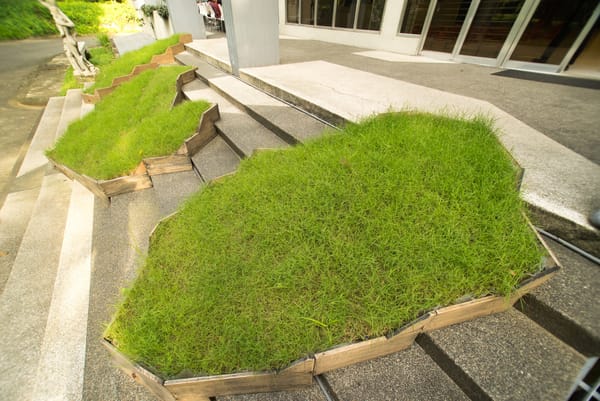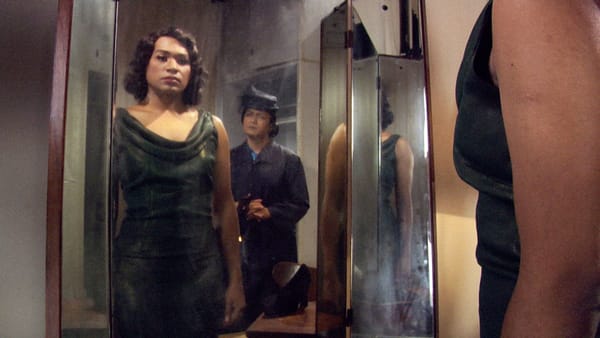Issue
Dispatch: Penang

Nestled along the Strait of Malacca, Penang has long been a crossroads of culture and commerce. It functioned as a pivotal port town in the British Empire before Singapore took center stage, serving as an entry point into Malaya for migrants from the Bay of Bengal, and the South China and Java Seas. This racial syncretism produced the cultural hallmarks George Town is known for today, and for which it was awarded with UNESCO World Heritage Site status in 2008: Indian-Muslim food, Anglo-Chinese architecture, and an urban culture suffuse with rituals, festivals, and animism.
Penang has also been home to notable Southeast Asian artists of the 20th century, including for Nanyang School artists such as Yong Mun Sen (1896–1962), Chuah Thean Teng (1914–2008), and Tay Mo-Leong (b. 1938). More recently, Penang produced contemporary artist Wong Hoy Cheong. Yet the associations and institutions that once supported these artists have not been sustained into the 21st century. In recent years, however, a new generation of organizations, alliances, and cultural workers has entered to fill that vacuum.
The most internationally connected institution to emerge is Blank Canvas, a contemporary art space founded in 2022 by collector Kwong Yee Leong. Its “experiential” ethos is perhaps best encapsulated by a 2024 collection show, “It Depends . . .” The gallery was awash in darkness, and visitors were invited to turn on their phone lights to view the works while being accompanied by sounds and scents of the forest developed by co-curator and landscape designer sputnikforest. I found myself squinting at Tan Zi Hao’s miniscule photographs of case-bearers, I nearly stepped on a copper piece from Danh Vo’s replica of the Statue of Liberty, which was lying innocuously on the floor, and I didn’t notice Ser Serpas’s metal stair inset into a wall until it was pointed out to me. Yet Chiharu Shiota’s taxidermied bird in a yarn cage was even more arresting with my phone light casting shadows across the bare walls, and by the time I got to Dan Lie’s fabric sculpture, my eyes had adjusted to the dark, lending its turmeric-dye a ghostly glow.
Through its residency, Blank Canvas has hosted artists Trevor Yeung and Ain, and curator Christina Li. Yet, its most splashy guest was Palai, an art fair founded by Paris-based Galerie Balice Hertling to show contemporary art in heritage homes. After the first two editions in Italy, its third edition in 2024, co-organized by Blank Canvas, was held at the Homestead in Penang, a granite and marble gilded mansion built in 1919, once the private residence of a tycoon and now the centerpiece of Wawasan Open University’s campus. A chorus of artists—both local and international—injected a refreshing dose of the contemporary to a city adamant on a conservative idea of heritage preservation.
This international presence is scaffolded by grassroots initiatives that have worked to build an art ecosystem in the city. The now-defunct Run Amok gallery and collective, founded in 2013 by the Penang-based artist and curator Hoo Fan Chon and the late Trevor Hampson, supported young, emerging and outsider art practices in Penang until it closed in 2017. Today, these networks of sociality Run Amok embodied still live on in the punkish Ruas Store and the cafe and artist-hangout spot, lecture venue, and screening room Narrow Marrow. Initiatives such as Hin Bus Depot and Penang Art District have attempted to formalize this collective ethos with limited success.
While small-scale initiatives have been able to scrape by, many spaces with larger ambitions bristle against the perennial problem of a lack of funding. Although geopolitical investments into Penang’s semiconductor industry have brought an influx of foreign wealth, that has yet to translate into a class of collectors and patrons. 2024 saw the closure of the beloved Penang House of Music, an interactive music history gallery and resource center located in Komtar. The fable of Komtar, once the tallest building in Southeast Asia, mirrors the story of the art scene Penang: once thriving and on the precipice of the contemporary, but now eclipsed by its neighbors in Kuala Lumpur and Singapore.
Penang, as locals proudly remind us, is an island. Yet as much as the Chinese-majority state celebrates its apartness, it has been forced to grapple with national racial politics, which came to a breaking point this year over a promotional video for the annual George Town Festival. Conservative critics contended the promotional video excluded Malays, despite the fact that the video featured the contemporary Malay dancer Aida Redza, whose practice is grounded in classical Malay dance. The controversy reflected long-standing tensions regarding racial and wealth disparities with the rest of the nation, with Malaysia’s suffocating need for art to be musealized representations of race, fixed in time of forever past. Perhaps one day it may yet find a way off the island—far from the insular mindset that limits what art and identity can be.
Sheau Yun Lim is a designer, curator, and researcher. She is interested in narratives of the past and of contemporary crises, especially as they relate to Southeast Asia. She is currently curating an exhibition on the political and affective economies of the plantation for Ilham Gallery, Kuala Lumpur (forthcoming April 2025) and KADIST San Francisco (forthcoming 2026).







